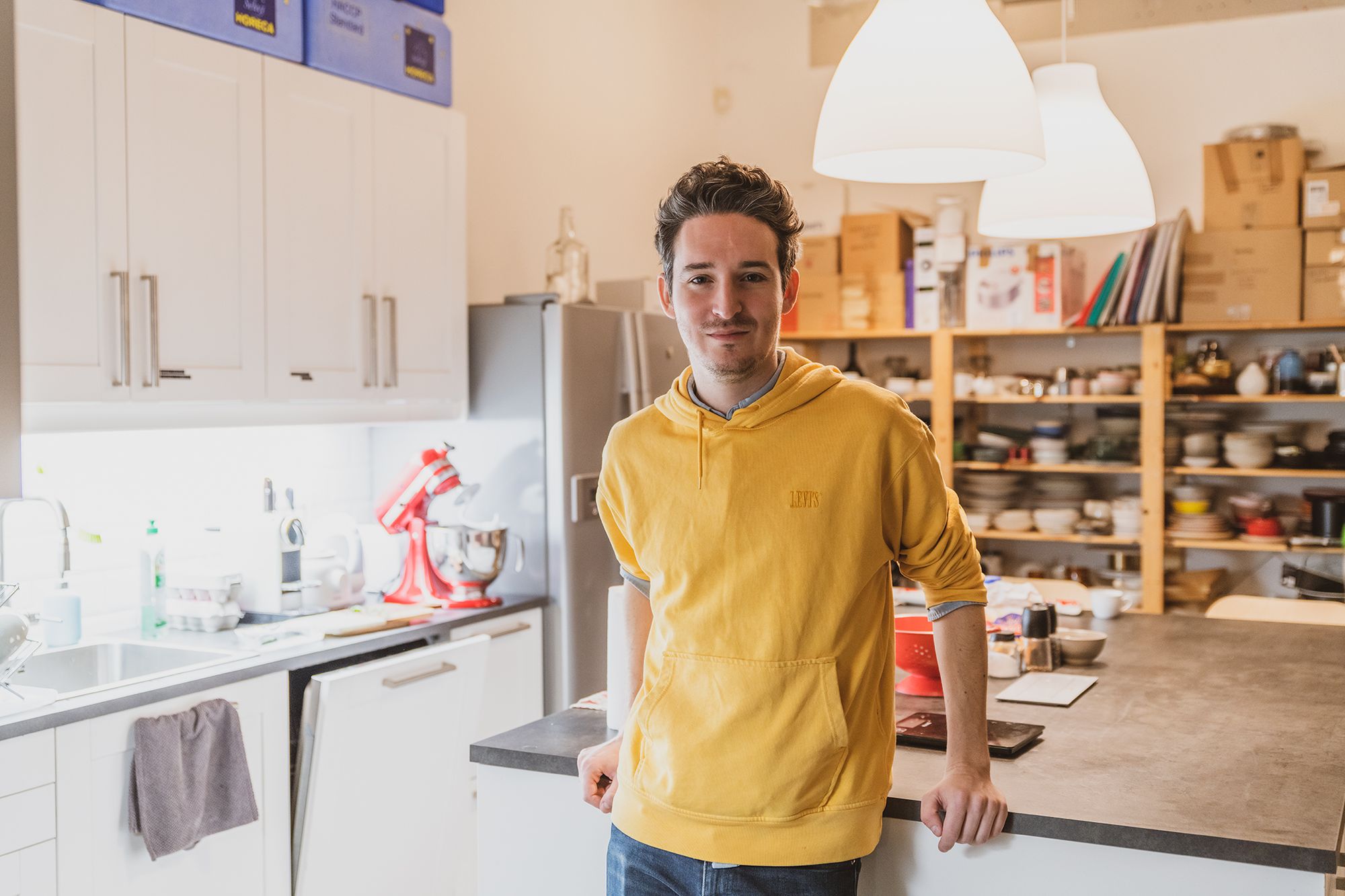Now that the long awaited spring comes closer by the day, and after each warmer day we keep longing for sweater weather even more, we might just get in the mood to go somewhere, just like we did before. To plan a cool weekend full of great programs, when we don’t have to pack sandwiches because we’ll just drop by the small cafe or restaurant we’ve had on our bucket list for some time—this is what we long for. Until planning a weekend like this becomes possible, we gain strength from cooking at home, we set tasks for ourselves and send a word to those in the same boat through the screens: don’t worry, we’ll soon be able to sit together in the warm sunshine, on the terrace of our favorite place. The joint campaign of Piqniq Budapest and Mastercard.
Dr. Attila Forgács – food psychologist, Corvinus University
“Food does not only contain calories: it also has very important emotional ingredients.”

Food is not only a source of energy with which we nourish our body: it is a combination of ingredients that are, most of the time, invisible. Our relationship to food is also determined by when and in what form we first encountered it, and it’s also important who made it for us. As also pointed out by Dr. Attila Forgács: we know 75% of our favorite dishes from our childhood—the food cooked by our mothers and grandmothers carries a sense of familiarity and, thus, means safety for us. How much the various dishes affect one’s life we have also discussed on HYPEANDHYPER in relation to the projects of food designer Angéla Góg (we have already featured the doctorate work of the designer earlier – the Ed.).
Food psychology, i.e. the psychology of eating, is a relatively new branch of psychology, and does not only include the examination of the various eating disorders, but also investigates the mechanism of everyday eating habits. In Hungary, an outstanding representative of the field is Dr. Attila Forgách: his book published in 1991 “Az evés lélektana” (The psychology of eating) is a recommended reading in which we can find answers to questions like why we eat even when we are not hungry.
Gábor Topár and Ádám Csordás
“The posted recipes came to a new life in the Házimenza group, everyone accepted that there are certain dishes that everyone likes and makes differently. This way, however, everyone kept developing the shared recipes, which allowed us to learn from each other.” – Ádám Csordás, photographer and barista
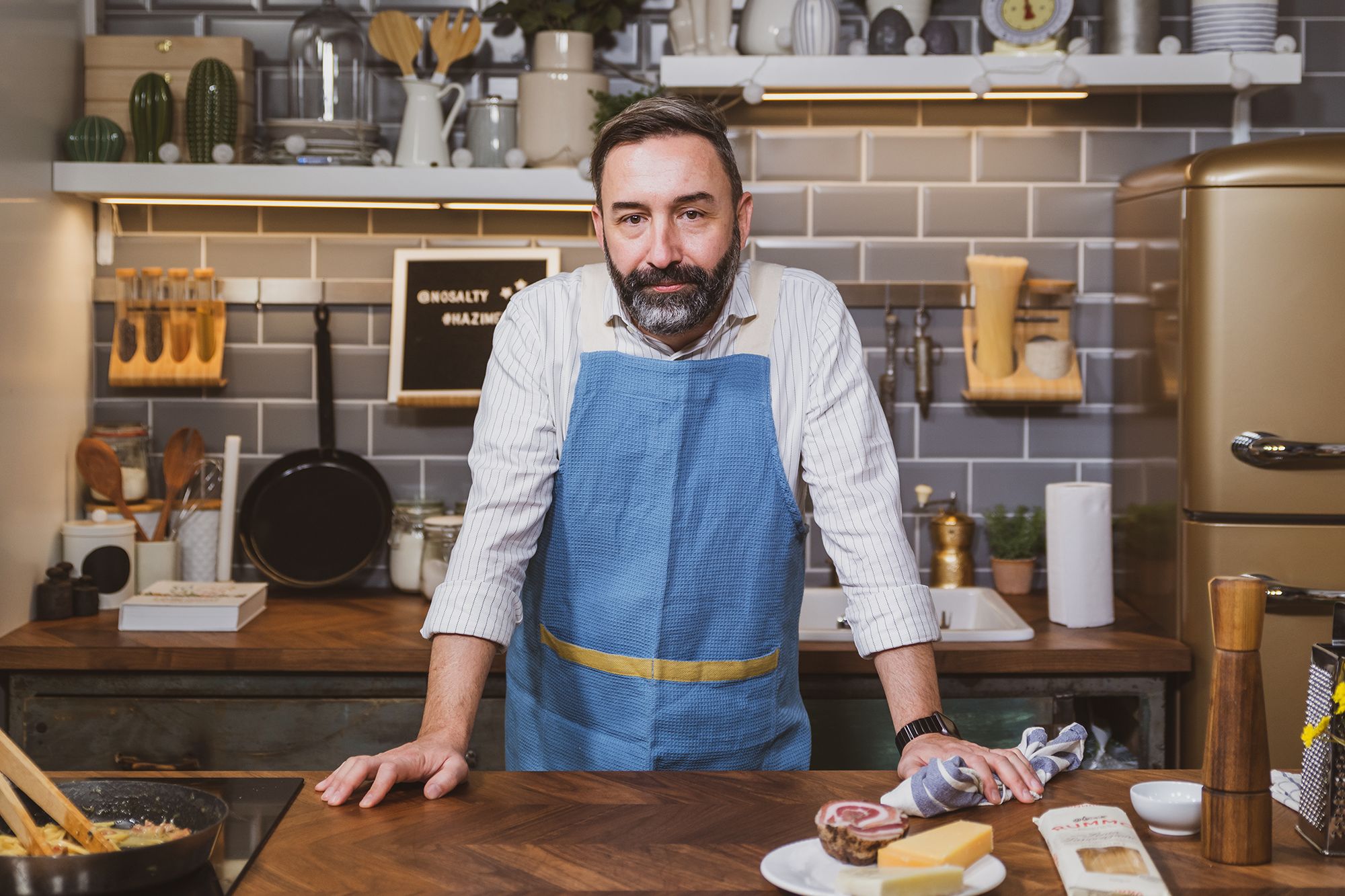
We have already covered the initiative Házimenza launched by Nosalty earlier—at the time, we talked about what Hungary’s most popular online food magazine can do to make sure their readers aren’t left without inspiring recipes during the quarantine. Of course, Házimenza became much more than that: it forged the hobby chefs stuck between the four walls into a community, the members of which shared their ideas and experiences with each other in the online space. The conversations that previously took place during office lunch breaks when seeing a good-looking home-made dish now moved to Házimenza: everyone could show what they were making and how they were making it.
If anything, cooking is typically an activity that builds a community: not only the dish consumed in a community can be a source of joy, but the discussion about the various foods and the ways of making it already gives rise to a sort of collective where the knowledge shared with each other is added together. The success of the online initiative was not only granted by the fact that anyone who asked for cooking-related help got it immediately: the enthusiastic members and the deeply committed editors who kept the group continuously going were also needed. Thanks to their work, Házimenza became one of the most loveable platforms during the first phase of the epidemic.
Márk Járai and Fanni Verbovszki
“People received a project. I went to the market, I cooked, my wife ate it, and I took photos of the result.” – Márk Járai, musician, an active member of Házimenza

The mandatory quarantine did not spare anyone: the restrictions were applicable to everyone, and even though many people settled in for working from home, there were some who could not do this due to their line of work. The various restrictions made our lives more difficult, but at the same time, they also offered a chance to try ourselves in new fields and new roles. Nosalty’s Instagram page spiced up Házimenza with live videos from mid-March to the end of June: in the lives, celebrities introduced their favorite recipes from their own kitchens.
Thus the community grew even stronger: owing to the genre, the users could connect to the content immediately, they could ask questions and share their reactions. According to Fanni Verbovszki, Házimenza gave a new purpose to her: the forced idleness was replaced by the fulfillment of her daily chores in the kitchen, which helped make her days bearable and allowed her to feel useful. The users could experience that everyone is in a very similar situation and that a public figure finds it just as hard to come up with a menu each day as anyone else.
Franciska Hosszú – owner, Hosszú Tányér restaurant
“It takes courage to open a restaurant in a truly small settlement, the audience of which longs for high quality. So that this can work, one needs a team with an outstanding personality in it, and where all members work for a shared goal.“
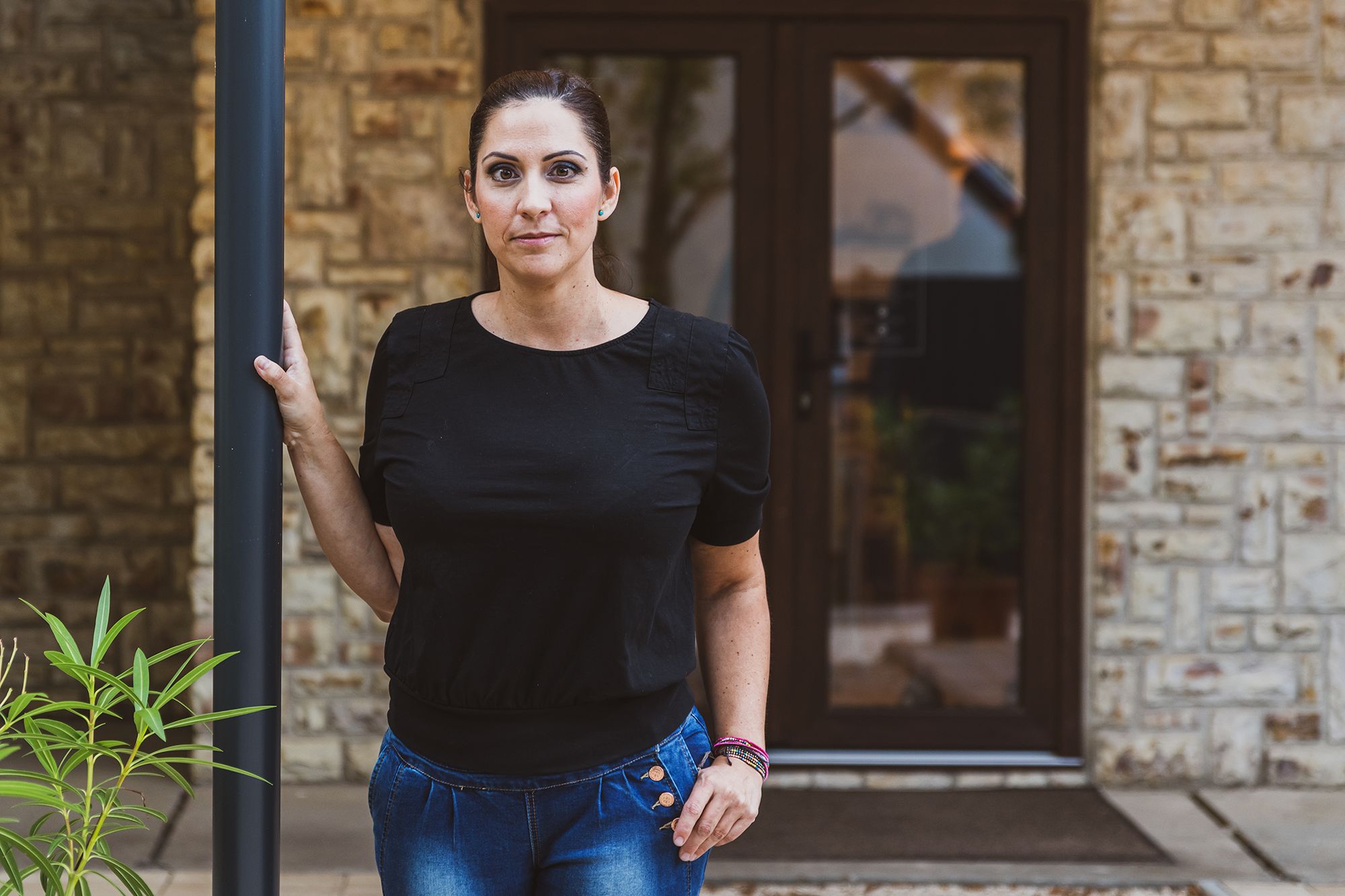
It has been clear for some time that one of the remarkable food locations of Vas county is Pajta bistro in Őriszentpéter, a place that every decent gourmet should visit in Covid-free times. But what about Baranya, a county that seems just as remote? There is also a small village here, Hosszúhetény, which we guess will be just as popular when Covid ends as its “peer” in Vas county.
The Hosszú Tányér gourmet house opened its doors in November last year: the restaurant can accommodate twenty dinner guests in times of peace. Even though currently they are closed, they are far from being idle: Péter Kun, the chef responsible for the breathtaking dishes, keeps experimenting with new flavors so that they can offer the best to their guests at the reopening. The enthusiasm and determination of Franciska Hosszú, the owner of the restaurant cannot be taken away either by the virus or the location (perhaps found less appealing by many): she firmly believes that quality finds its way, and one can go big even in with a small team, in a small village.
Regina Parti – founder, Bakancslista Magyarország
“I think there is a huge need for value-creating rural accommodations, and the guest experience can only be complete if it comes with a proper culinary background.“
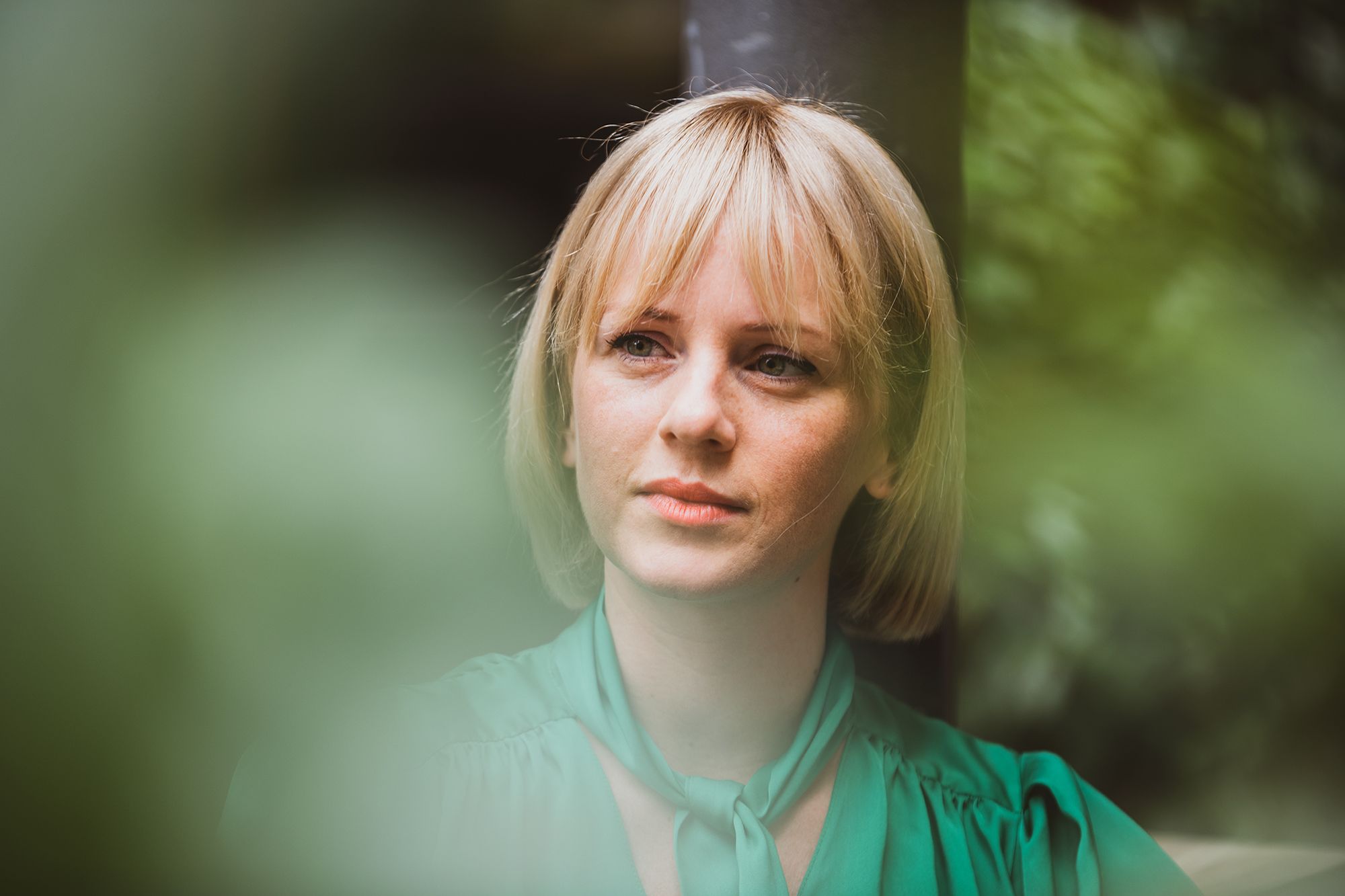
Where should we go, what should we see—questions we often ask ourselves, and today there are more and more online platforms where we can turn to for inspiration, looking for new experiences. One of the most popular sites of the kind is Bakancslista Magyarország, which has a follower base of 12,000 on Facebook. The interactive travel guide called to life by Regina Galambos-Parti collects Hungarian tourist attractions that are worth visiting from several aspects. When choosing the perfect destination, in addition to reaching the number of steps planned for the day, it is also important to indulge in our passion for gastronomy while feasting our eyes on the marvels of nature.
Luckily, the sites of Bakancslista Magyarország offer countless exciting accommodations, programs and catering establishments, and so those looking for new adventures will not be disappointed for sure, may it be only for an afternoon or a long weekend. Regina, who started her career in the tourism and hotel industry, also strives to call the audience’s attention to Hungary’s hidden treasures in this challenging period, as a way of supporting the participants of Hungarian tourism.
Photography | Dávid Horpáczi
Video | Gergő Sepsi
Piqniq Budapest | Web | Facebook | Instagram
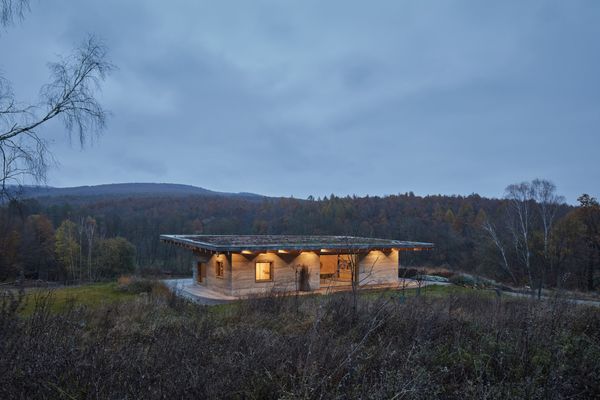
A modern nomad’s home in the Czech forest | Ateliér Lina Bellovičová
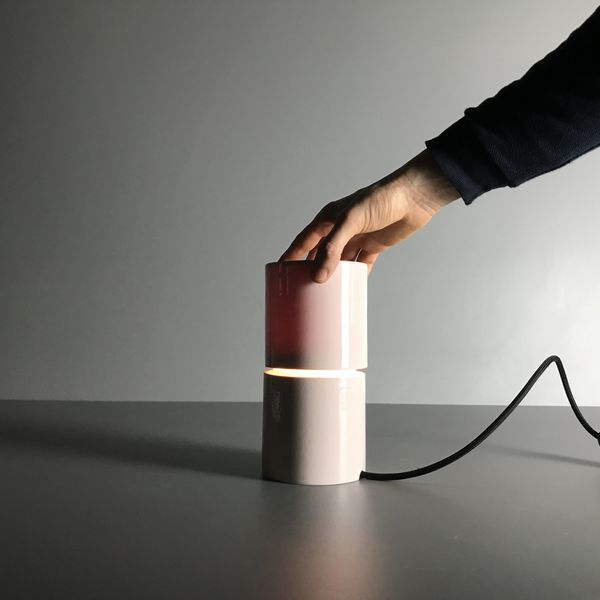
Light encased in porcelain | Mastro Design










